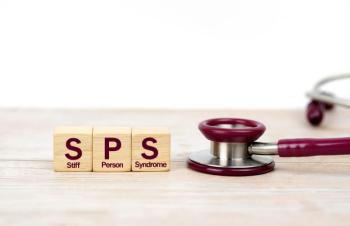
Reducing Cardiac Toxicity During Cancer Treatment
Chances of left ventricular ejection fraction almost disappeared when patient took the ACE-inhibitor lisinopril during treatment with trastuzumab/anthracycline, according to research presented at ASCO.
Patients treated with anthracycline chemotherapy prior to treatment with trastuzumab (Herceptin, Genentech) for HER2-positive early-stage breast cancer experienced a decline in left ventricular ejection fraction (LVEF) below normal levels, but in patients treated with lisinopril that decline was largely prevented, according to data
“The anthracycline-induced decrease in left ventricular ejection fraction women receiving trastuzumab for a year to below 50% was much larger than previously reported,” lead investigator Pamela Munster, MD, professor of medicine at the University of California San Francisco, said at the meeting. “Lisinopril was well tolerated in this group, even in patients without hypertension.
A total of 468 women with HER2-positive early-stage breast cancer from 127 community-based oncology practices were enrolled; 189 (40%) patients were treated once daily with the ACE inhibitor lisinopril (10mg), the beta blocker carvedilol (10mg), or placebo during treatment with trastuzumab, and patients were further stratified by anthracycline use.
In women who received anthracycline prior to treatment with trastuzumab, the drop in LVEF to below 50% in the placebo arm was 30.5%. This drop was prevented in women taking lisinopril. In this group, only 10.8% of women had a drop in left ventricular rejection fraction to below 50%.
Concerns about cardiotoxic effects of cancer treatment, particularly for breast cancer patients, have climbed in recent years, due to both the effects of therapies and comorbidities of the patients;
Recently, leading
Investigators found that the rate of LVEF decline to below normal was much more frequent in patients treated with an anthracycline than those treated with trastuzumab alone (21% vs 4.1%). They also found that the beta-blocker carvedilol had a small effect on LVEF, but it was not significant.
Treatment of HER2-positive breast cancer patients with trastuzumab is highly effective. However, a LVEF and clinical heart failure often lead to discontinuation of treatment.
Cardiovascular events are the most common reason for black box warnings for cancer therapies, according to another abstract
Among all cardiovascular warnings, arrhythmias were the most common (21.6%), followed by heart failure (13.9%), thromboembolic disease (13.9%), uncontrolled hypertension (11.8%), sudden cardiovascular death (9.0%), ischemic disease (6.9%), stroke (4.9%), and other cardiovascular events (12.5%).
Newsletter
Get the latest industry news, event updates, and more from Managed healthcare Executive.


















































